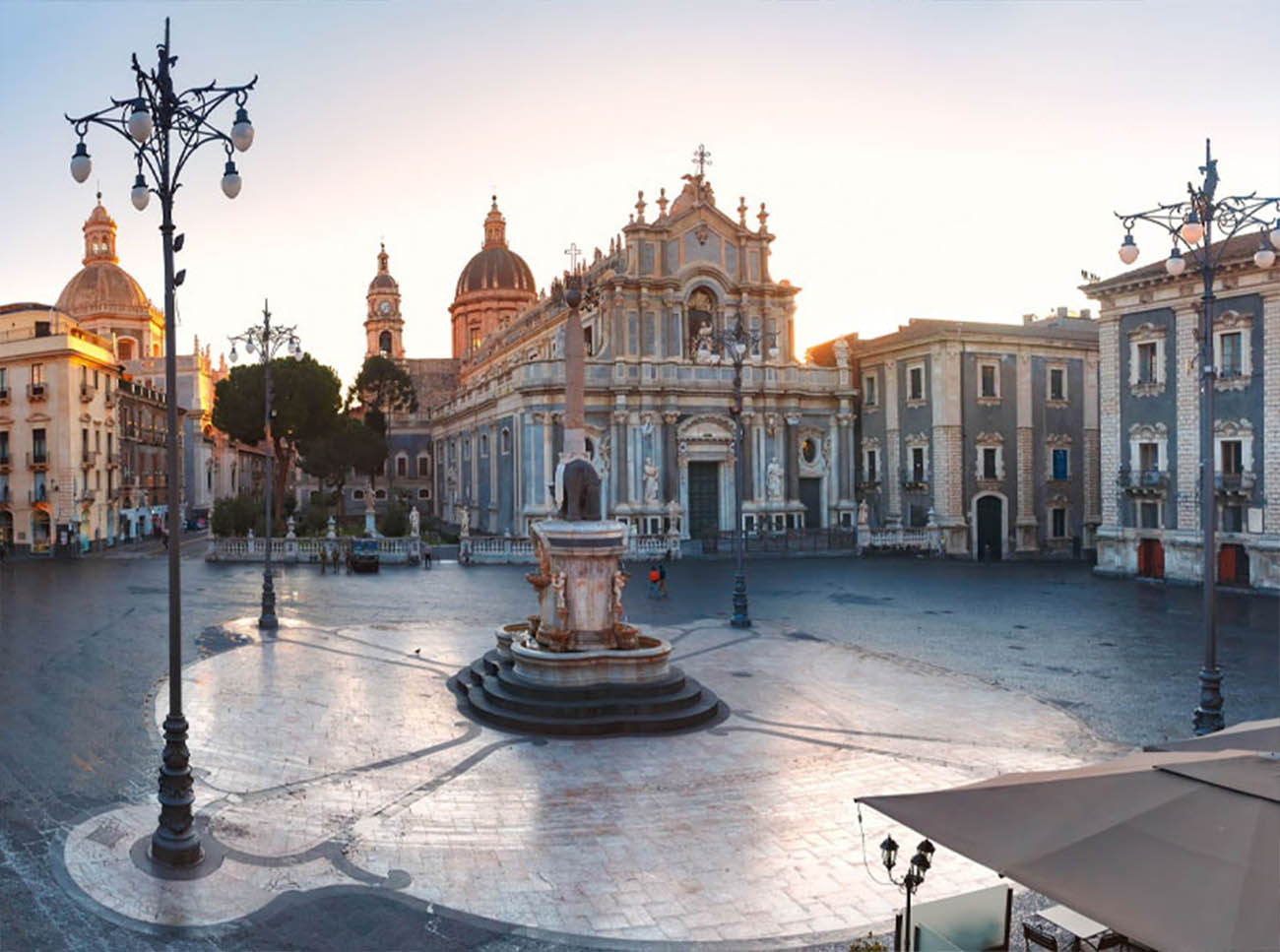
CATANIA: A WELCOMING CITY, RICH IN HISTORY AND TRADITIONS
It was founded in 729 B.C. by the Greek colonists and was built with the ancient name of Katene. This wonderful city had both glorious and sad times. The tyrant Hieron I of Syracuse, after conquering Katane, moved its inhabitants to the city of Leontinoi (today’s Lentini), and named the town after the nearby volcano, Aitna. He replaced the inhabitants with 10,000 new settlers, both Syracusans and Greeks. After Hieron’s death, they were expelled to the southern slope of Etna, in today’s Paternò and the ancient Katanaioi were able to return to their city.
The city flourished again thanks to the fertile volcanic soil which aided agriculture, and started to grow more and more, until it became one of the most important cities in Sicily, against Syracuse, which was one of the most imposing cities of the Mediterranean in antiquity.
It has been occupied and defeated several times by the Syracusans, but its time of splendor began in 263 B.C. with the arrival of the Roman army.
Under the Roman rule, Catania started to be part of the Roman province of Sicily as Civitas Decumana. Many buildings, such as the Roman theatre, the amphitheatre and the baths bear witness to the city’s significant demographic and cultural growth during the Roman Empire.
However, with the fall of the Roman Empire the city has been conquered several times by numerous populations. During the Byzantine and Arab domination, Catania lost its importance and was outstripped by other Sicilian cities such as Syracuse and Palermo.
It came again to prominence as a commercial and maritime centre only under the Normans, but the earthquake of 1169 with 15,000 deaths and the devastation caused by Emperor Henry VI of Hohenstaufen in 1194 made the city fall into oblivion.
With the foundation in 1434 of the University of Catania, the oldest in Sicily and one of the oldest in Italy, and with the settlement in the city of the Spanish Aragonese family, started the development that will lead Catania to become the second city of the Sicily and one of the most important in Southern Italy.
In 1576 a huge part of the population died due to the plague; in 1669 a major lava eruption destroyed the western part of the city; finally in 1693 a heavy earthquake demolished the rest of Catania.
In the 18th century, during the Baroque age, the city was rebuilt following the projects by Giovanni Battista Vaccarini, and has remained since then a real hub of eastern Sicily. Catania is one of the most fascinating and avant-garde cities in Sicily, full of life and culture.
How can you not be struck by the incredible view of Mount Etna? Baroque art with its artistic and architectural treasures, and the Ionian coast and its traditions establish it as one of the most acclaimed tourist destinations of the Island.


